The Economics and Statistics Division maintains archives of previous publications for accountability purposes, but makes no updates to keep these documents current with the latest data revisions from Statistics Canada. As a result, information in older documents may not be accurate. Please exercise caution when referring to older documents. For the latest information and historical data, please contact the individual listed to the right.
<--- Return to Archive
For additional information relating to this article, please contact:
April 23, 2021HOUSING STARTS, MARCH 2021 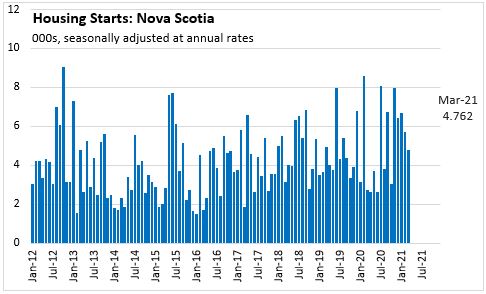
Nova Scotia’s housing starts (seasonally adjusted annualized rate) totalled 4,762 units in March 2021. This was 16.7% below the 5,718 units started in February 2021.
Housing starts were lower across the province in March. Housing starts in Halifax declined 12.5% month-over-month to 2,679 units. Outside of Halifax, housing starts were down 21.6% from February and totalled 2,083 units in March.
Compared to the previous year, Nova Scotia’s housing starts were up 76.4% with higher starts both in and outside of Halifax. Housing starts in Halifax were up 113.5% year-over-year while outside of Halifax housing starts were up 44.2% when compared to March 2020.
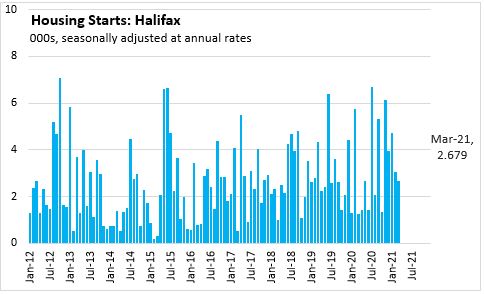
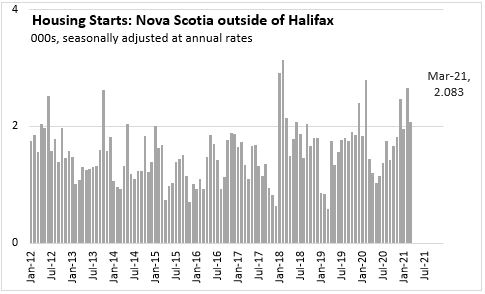
The six-month moving average of housing starts in Nova Scotia and Halifax was relatively flat through 2017. During 2018, the six-month moving average increased due to higher starts for multiples and declined after reaching a peak in September. The six-month moving average rose in the summer of 2019 due to trends in the Halifax market. Outside of Halifax, housing starts rose through the second half of 2019. Housing starts trended down across the province in the first half of 2020 before rebounding in the summer of 2020. Since then, housing starts have trended up across the province.

In urban areas, housing starts for multiples are generally higher than for singles with greater variability month-to-month. The six-month moving average for singles has remained relatively flat through most of 2019 and 2020. Since October 2020, it has trended upward. The six-month moving average for multiples rose during the summer months of 2018 and declined until the first quarter of 2019. After a period of fluctuation in 2019 and 2020, the six-month moving average for multiples rose through the final months of 2020.
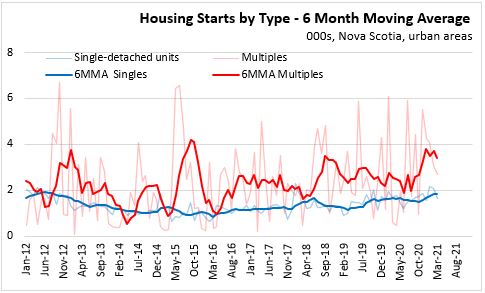
In Canada, housing starts rose 21.6% from previous month to 335,200 units in March 2021. When compared to March 2020, housing starts in Canada were up 71.8%.
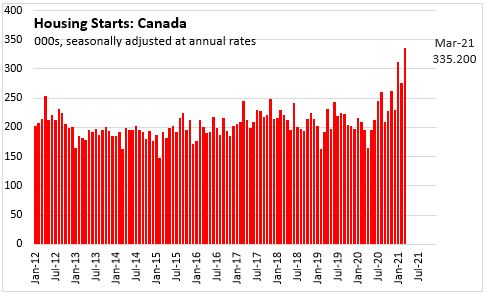
Housing starts rose in four provinces, led by Saskatchewan (+72.9%). New Brunswick posted the largest decline (-37.7%) over the previous month.
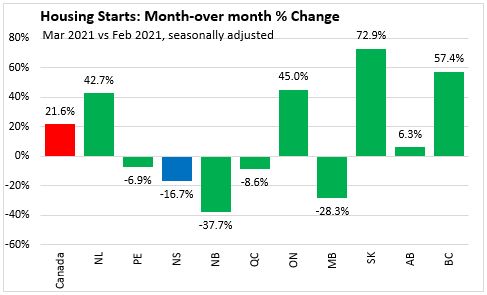
During the first quarter of 2021, Nova Scotia's housing starts were up 19.2% compared to the same period last year. Canada’s housing starts increased 48.5% compared to the first three months of 2020. Housing starts rose in all provinces except New Brunswick (-12.6%) year-to-date with Newfoundland and Labrador posting the strongest growth (148.3%).
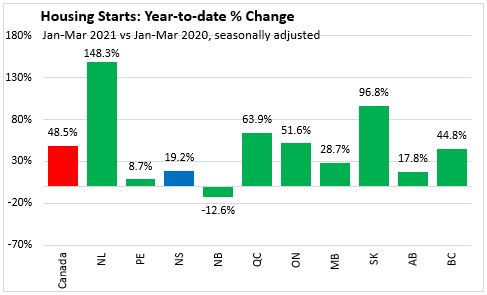
Note: Urban areas are defined as areas over 10,000 people
Source: Statistics Canada, Table 34-10-0158-01 Canada Mortgage and Housing Corporation, housing starts, all areas, Canada and provinces, seasonally adjusted at annual rates, monthly (x 1,000) ; Table 34-10-0156-01 Canada Mortgage and Housing Corporation, housing starts in all centres 10,000 and over, Canada, provinces, and census metropolitan areas, seasonally adjusted at annual rates, monthly (x 1,000)
<--- Return to Archive